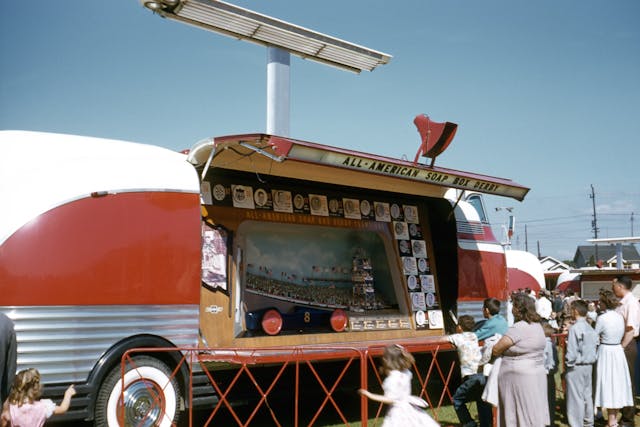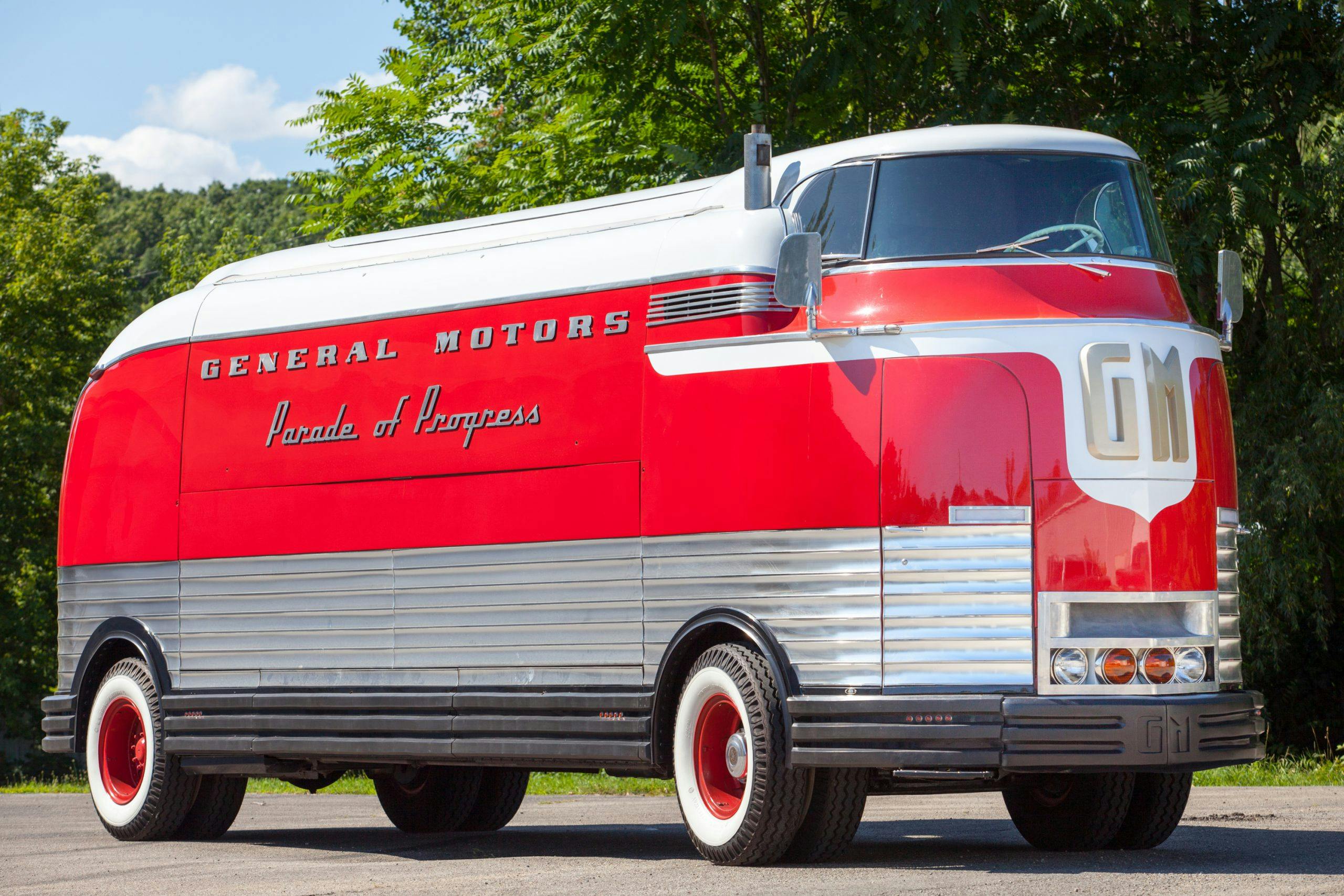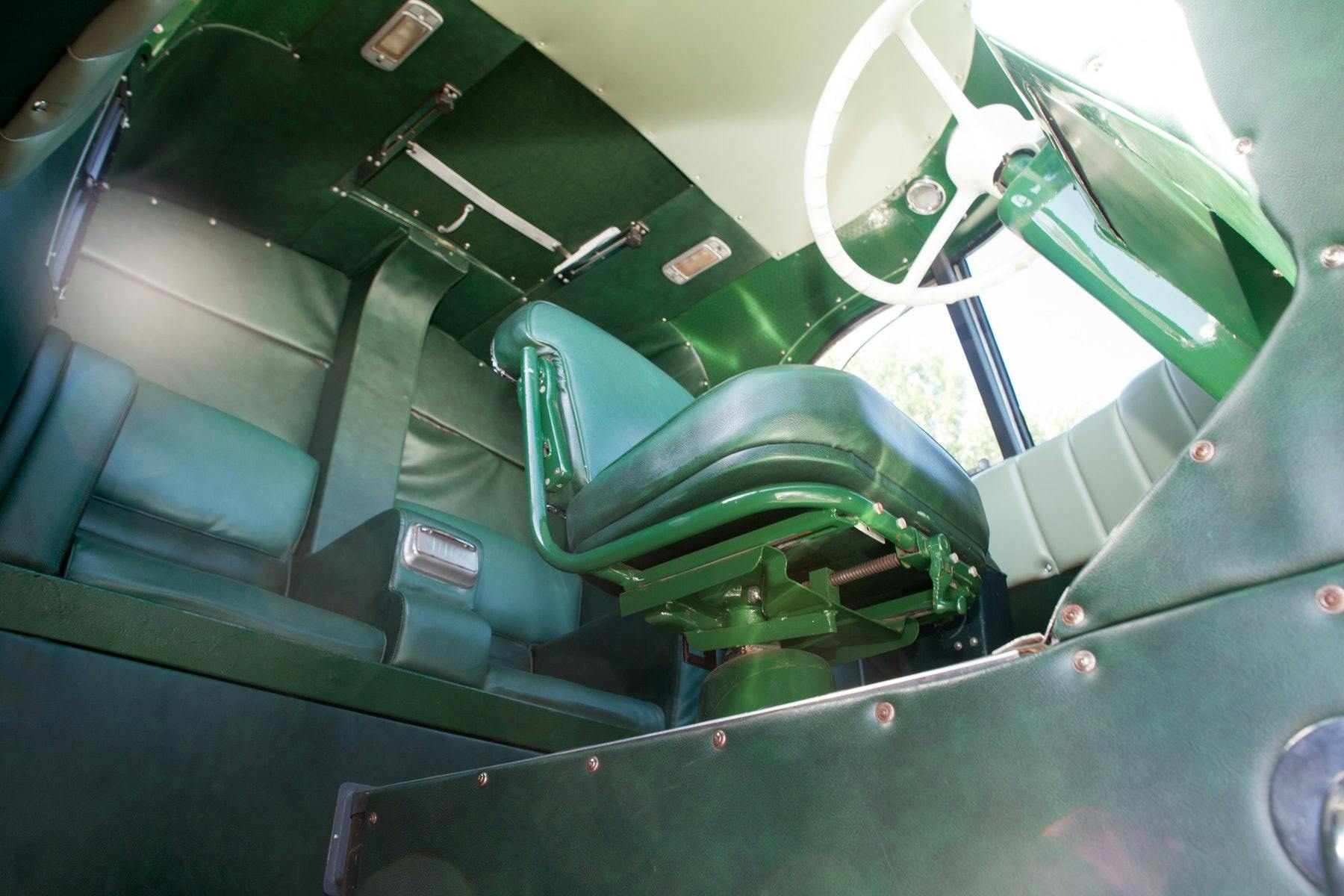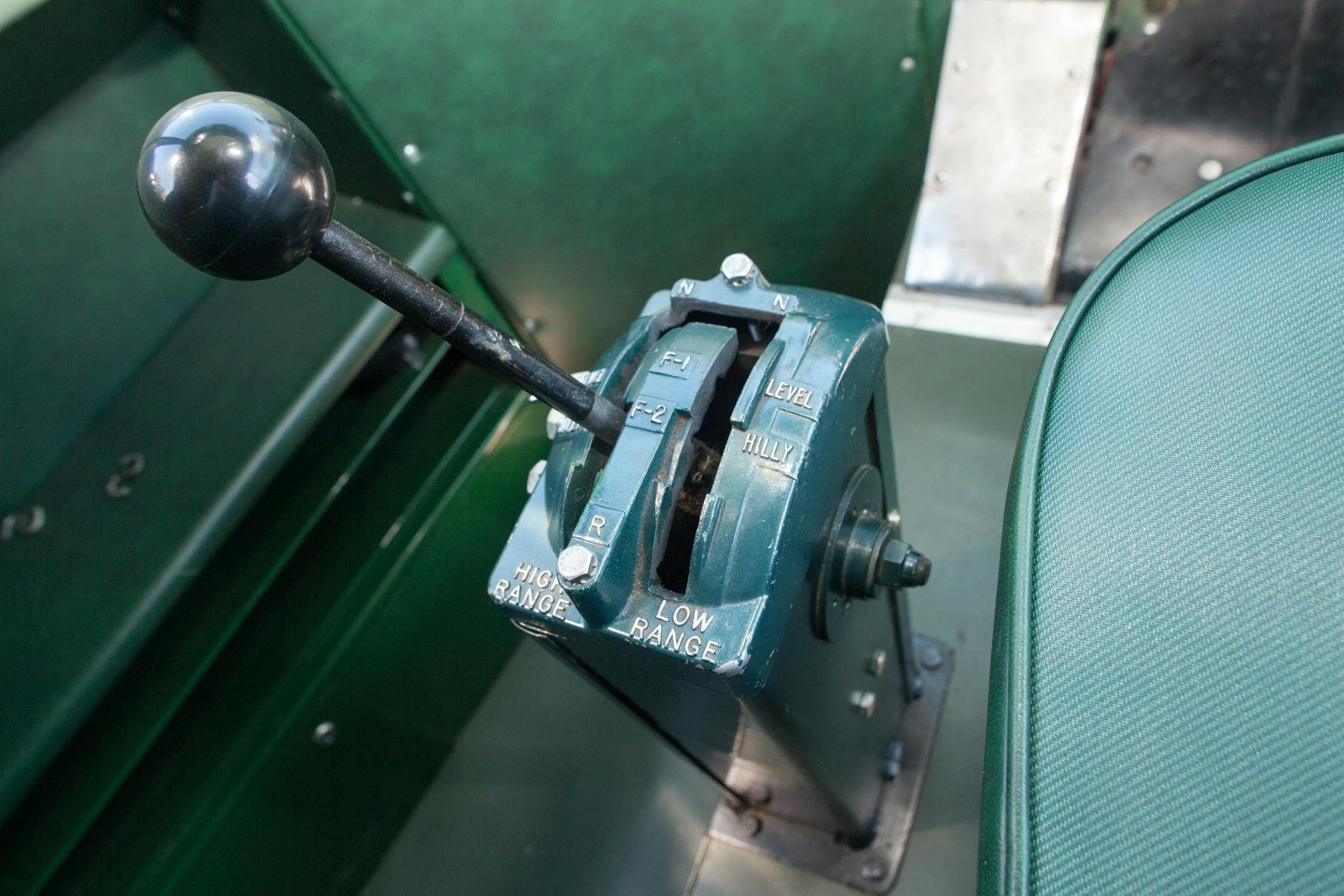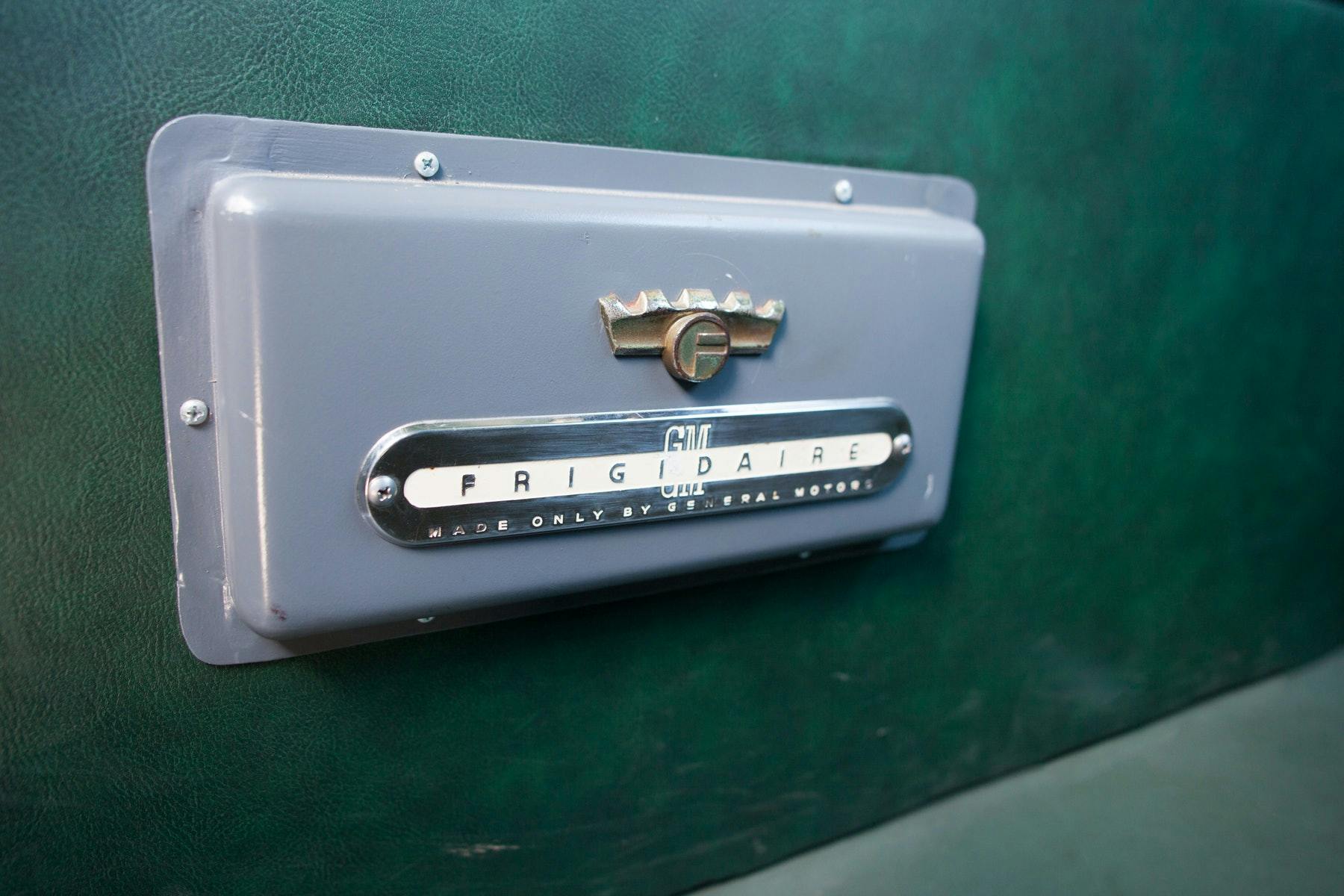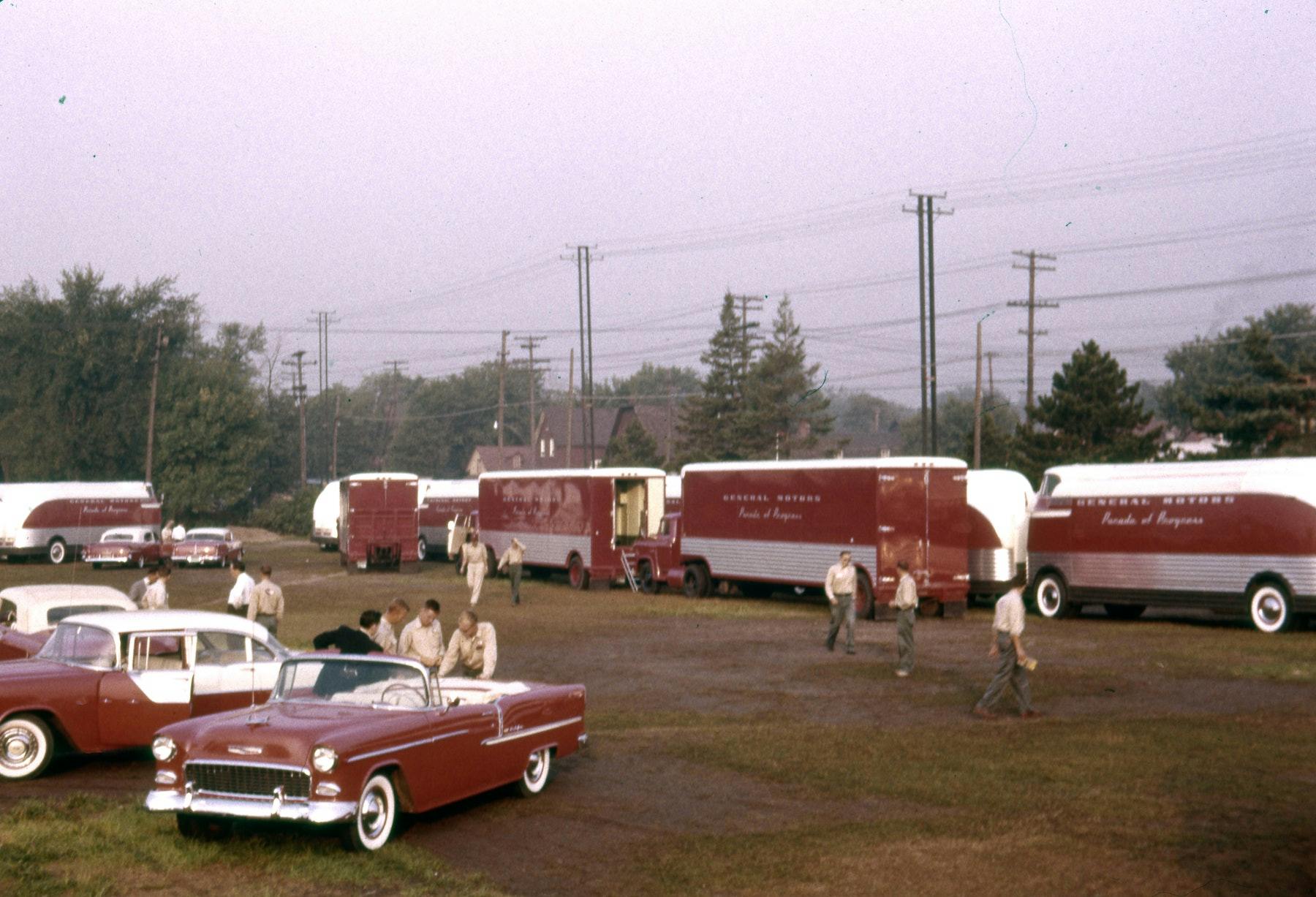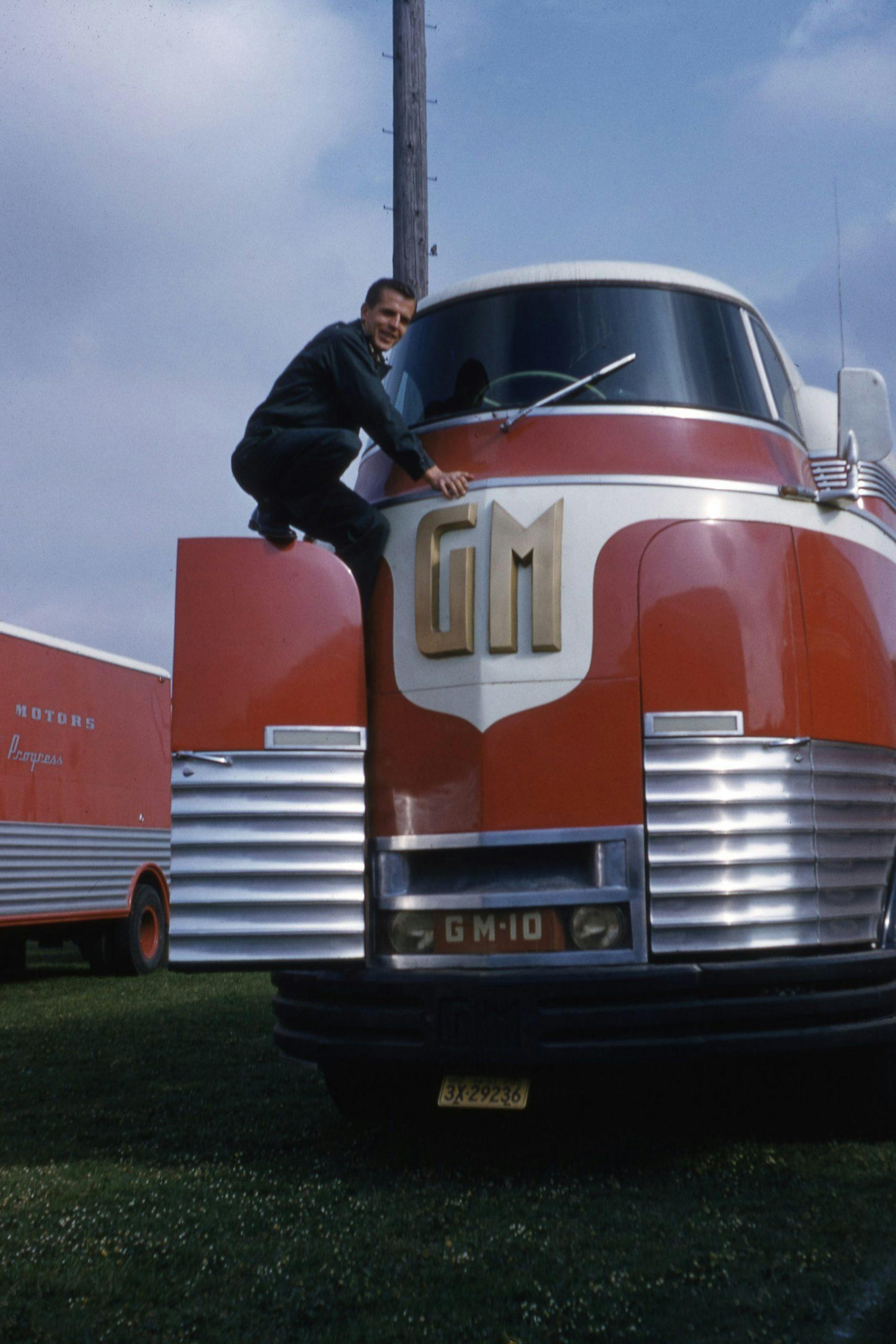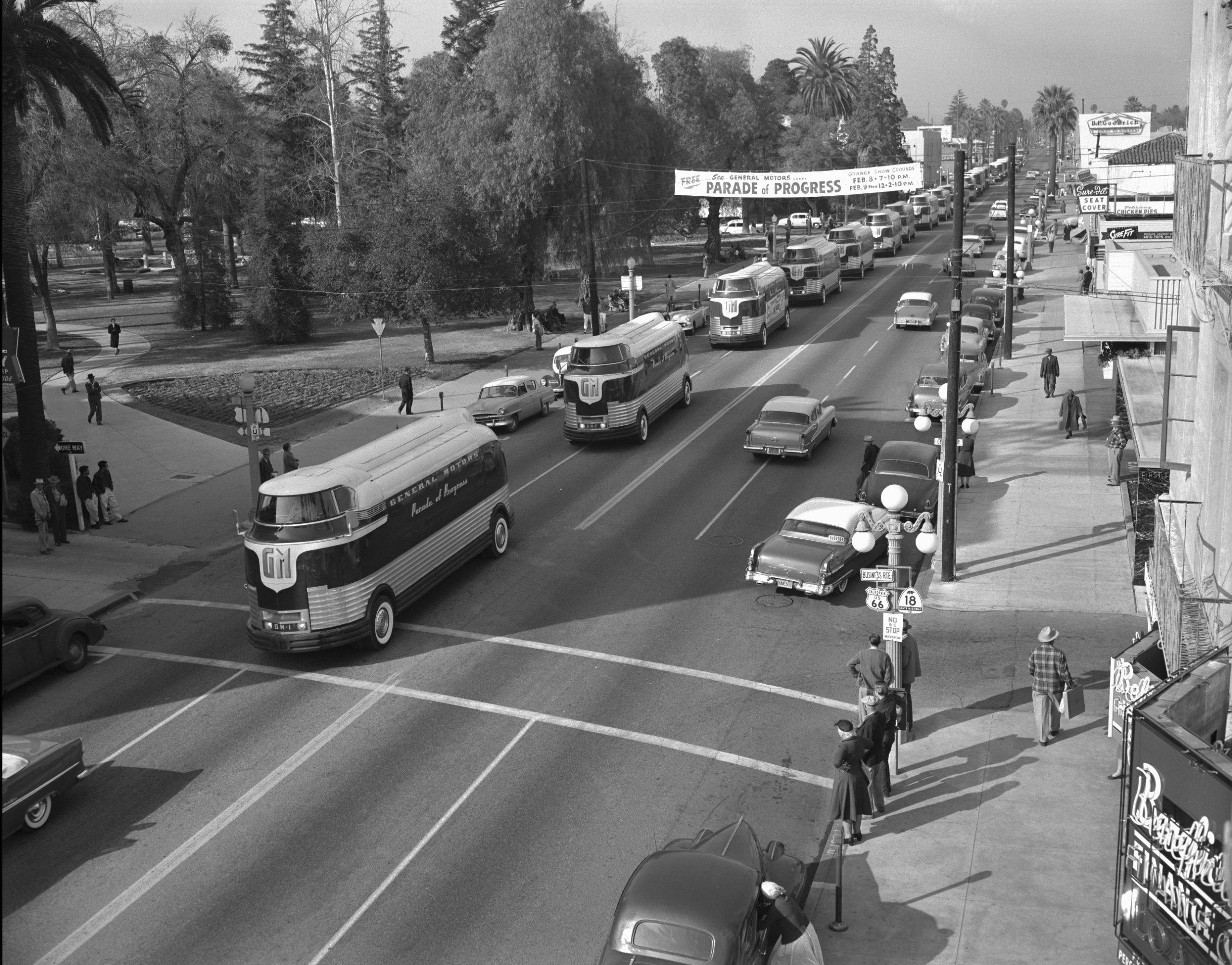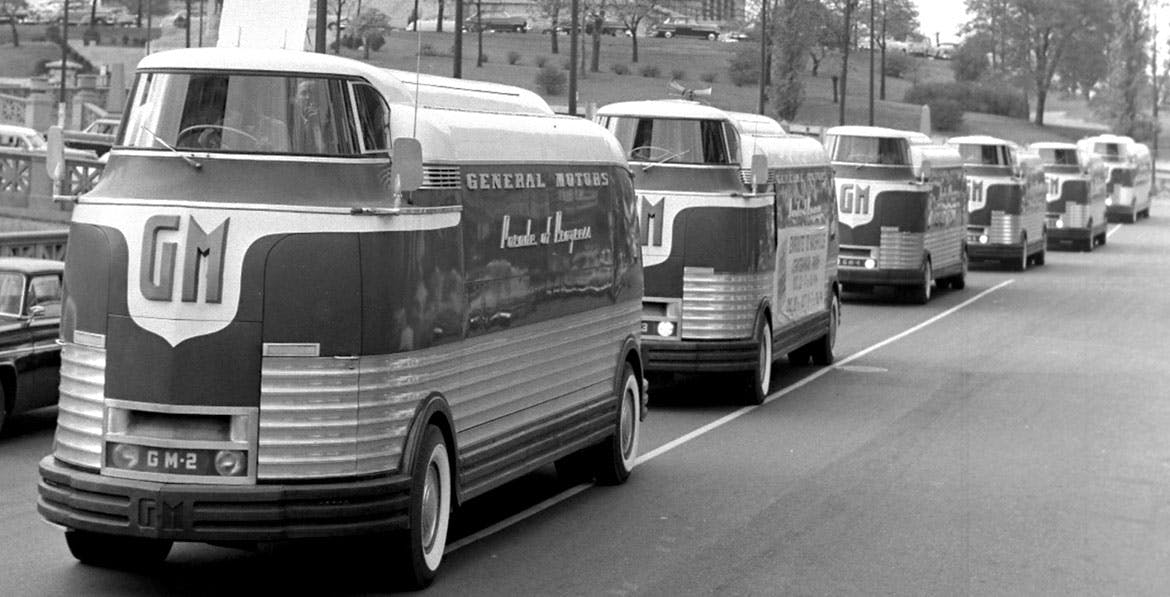Decades before the internet, GM’s Futurliners offered a glimpse of what could be
Back when the World’s Fair was the best way to peer into the future and learn about cutting-edge technological and scientific advances from around the globe, General Motors expanded upon the idea and took its show on the road. GM’s “Parade of Progress” featured huge buses—eight in the beginning and 12 in later years—that went on three extended tours of the country from 1936 to ’56 and left a lasting impression on those who saw them.
GM’s self-contained display and transport vehicles featured massive side doors that opened to reveal portable stages and exhibits about everything from jet engines to televisions. The buses were staffed by some 60 recent college graduates, who gave presentations and took questions from the crowd.
According to a 1953 newsreel, “Behind the gleaming panels of those Futurliners are wonders to behold—mechanical, electrical, and chemical exhibits that will amaze, amuse, and entertain millions in the months ahead.”

The idea originated at the 1933 Chicago World’s Fair, when legendary GM research guru Charles F. Kettering attended the event and wondered how the idea could be packaged and taken to the people. Kettering’s vision became a reality in 1936, when GM launched a traveling “circus of science” that demonstrated how industrial research improved the American way of life “through better products and processes.”
The Parade of Progress was expanded in 1940, with Harley Earl overseeing the design of a dozen new custom haulers. Assembled by Fisher Body, each Futurliner rode on a 248-inch wheelbase chassis built by Yellow Truck & Coach Manufacturing. The haulers were 8 feet wide and 33 feet long, and each weighed nearly 12 tons. They had dual wheels front and rear, and the driver sat high above the ground in a central “cockpit” accessed by a spiral stairway. Power came from a 400-cubic-inch, six-cylinder engine mated to a four-speed manual transmission.
Two months after the second tour ended in 1941, the bombing of Pearl Harbor threw America into World War II and sidelined the Parade of Progress until 1952, when GM president Harlow Curtice recommissioned the caravan.
Refurbished, slightly modified in appearance, and converted from diesel to gasoline power, the Futurliners returned to the road in 1953 and toured the U.S. and Canada for three years. By July 1956, however, the crowds had dwindled—perhaps the popularity of TV, one of the caravan’s early exhibits, had something to do with it—and the Parade of Progress closed. GM gave two Futurliners to the Michigan State Police to use as safety education vehicles; the others were sold to businesses.
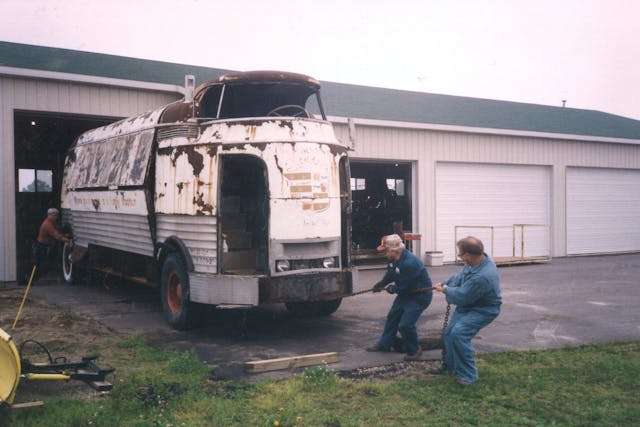
Nine of the 12 buses still exist; only three have been fully restored. One of those sold for $4 million at Barrett-Jackson in 2006. Perhaps the best-known example, however, is number 10, which was used by Dreisbach & Sons Cadillac in Detroit following its time in the Parade of Progress. In 1992, Chicago collector Joe Bortz donated No. 10 to the National Automotive and Truck Museum of the United States (NATMUS) in Auburn, Indiana. The bus sat idle for seven years before Michigan automotive enthusiast Don Mayton assembled a dedicated group of volunteers to restore it.
Beginning in 1999, “it sort of took over my life for a few years,” Mayton jokes in a video commemorating the Futurliner’s addition to the National Historic Vehicle Register in 2015. In reality, the restoration took seven long years, but the team did a skillful and thorough job of returning the bus to its former Parade of Progress glory.
In the video, Mayton tears up as he shares the story of a man who remembered being amazed by the Parade of Progress as a child. Decades before television and the internet made the world a much smaller place, the Futurliner showed Americans what could be. To many, it was an unforgettable experience.
